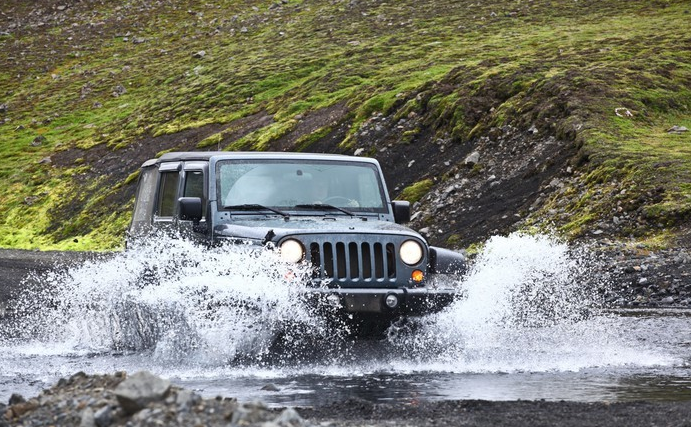In the heart of off-road exploration lies a thrilling challenge—one that demands both caution and courage: water crossings. This article unfolds the intricacies of navigating these aquatic terrains in your 4×4, emphasizing the risks and rewards that come with each surge. From the formidable force of flowing water to the buoyant dance between weight and depth, embark on a journey where the uncharted waters become both playground and potential peril. For the intrepid off-road enthusiast, water crossings signify not only excitement and exhilaration but also a substantial investment. This comprehensive guide delves into the art of tackling these challenges, covering everything from pre-planning and vehicle modifications to strategic driving techniques and post-crossing maintenance. So, fasten your seat belts, roll down the windows, and dive into the essential knowledge that turns water crossings into not just obstacles but exhilarating experiences in the realm of off-road adventure.
Conquering the Flow:
Mastering Off-Road
Water Crossings
For Thrilling Adventures
Embarking on a water crossing in your Jeep, Bronco, Tacoma, or other 4×4 is no mere joyride—it’s a thrilling challenge that demands both skill and respect, especially for those unfamiliar with the nuances of off-road adventures. Deep water crossings aren’t for the inexperienced; they pose real risks, not only to your vehicle’s engine but, in extreme cases, to its occupants. The power of flowing water is not to be underestimated, with each foot of water against your vehicle exerting 500 pounds of lateral force. Factor in buoyancy, and you’ll find that a vehicle can be floating in just two feet of water. For the 4×4 enthusiasts, these crossings teeter on the edge of excitement and potential expense.
A 4×4 might have an adventurous spirit, but it’s no amphibian, nor is it waterproof. Even the modified ones that can tread water have limits, dependent on various factors, including the vehicle’s make and age. A general guideline pegs the safe depth at around the top of the tires—going any deeper is flirting with danger.
Thinking Ahead
Preparedness is key. Before tackling any water crossing, ensure your recovery equipment is easily accessible. In emergency situations, time is of the essence, and fumbling for buried gear while stuck in the middle of a river is the last thing you want.
Unfamiliar Waters
Before you dive in, literally, scout the unknown waters on foot. If you can’t walk it safely, you shouldn’t attempt to drive it. Fast-flowing or excessively deep waters are red flags, signaling potential risks that demand serious consideration.
Breathers
Your vehicle’s axles, manual transmissions, and transfer cases have breathers crucial for pressure equalization. Water crossing, however, poses a threat as the hot components rapidly cool, causing pressure drops and potential water intake. Extending breathers, especially differential breathers, higher into the chassis using flexible tubing helps draw dry air during crossings, a modification essential for frequent water-crossing 4x4s.
Air Intake
Engines breathe, but they can’t breathe water. A flooded air intake can lead to “hydro-locking,” causing severe engine damage. Know the location of your air intake, ensuring it’s not susceptible to direct water entry during crossings. For regular water encounters, a permanent relocation like a snorkel might be worth considering.
The Engine Bay
Your engine bay is ground zero during water crossings. A wet ignition system can stall your engine, creating a predicament in the middle of a river. Protective measures, like tarps across the vehicle’s front to minimize water entry, are prudent. For diesel engines, the absence of an ignition system provides a bit more security during water crossings.
The Radiator Fan
Inspect your radiator fan before tackling water. While some 4x4s have fans that don’t spin at full speed when cool, others have fixed fans. Understanding your fan type is crucial. When in doubt, removing the fan belt before a water crossing prevents potential damage.
Walking the Crossing
When uncertain about the water’s depth, walking the crossing is the safest reconnaissance. This method helps identify wheel tracks, hidden obstacles, and depth, ensuring a smoother ride and reducing surprises.
Techniques for Driving through the Water
Picture your route mentally before entering the water. Use low range second gear at 1500-2000 rpm, creating a controlled bow wave. Don’t rush; find the right speed. Too fast risks water intake; too slow may flood the engine bay. Avoid clutch usage during stops or reversals to prevent water and debris infiltration. If the engine stalls, attempt a restart in neutral without using the clutch. For stalled mid-crossing situations, consider climbing out of the window to avoid flooding the interior.
Maintenance after Water-Crossings
Post-crossing inspections are paramount. For water crossings axle-depth or deeper, check differential oil for water contamination. Extended breathers don’t guarantee safety, so a thorough inspection is advised. Beyond axles, check gearbox, transfer case, engine oil, and electrical components like the winch. Periodic maintenance and post-water crossing tests ensure your vehicle is ready for the next off-road adventure.
Approach water crossings with due seriousness, recognizing their potential to inflict expensive damage on your vehicle’s engine and drive train. With proper preparation, meticulous post-inspection, and timely maintenance, conquering water crossings becomes a rewarding facet of your off-road journey.
As an E3 Offroad & Overland member, you get access to TONS of informative offroad and overland articles and content. Sign Up or Log In today and enjoy all of the tools, resources, product discounts, community and entertainment that E3 Offroad / Overland Association offers.

